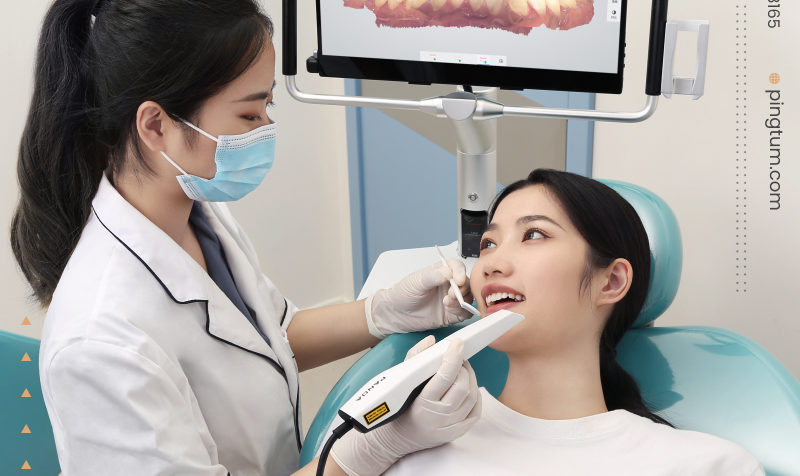As digital technologies evolve, they offer new facilities, choices, flexibility, and conveniences to dental professionals, technicians, and patients. Similarly, in digital dentistry, if one technology that has drastically changed dentistry in many ways, it has to be the intraoral scanner (IO scanner).With the introduction of these devices, dental practitioners are now better positioned to work more precisely and efficiently. If you are someone who has recently come across a digital impression system in the form of intraoral scanners and wants to know more about them before investing, then read the blog to know more.

Intraoral Scanners- What are they?
Intraoral scanners are devices used in dentistry to obtain digital impressions of the teeth and gums to develop crowns, dentures, aligners, and other types of dental prosthetics. They work by projecting a light source on the area to be diagnosed and capture multiple images with the help of imaging sensors present within the scanners. These images are then processed by the scanning software to create a flawless 3D surface model of the teeth and gum area.
How an intraoral scanner cost is a cost-saving option?
Compared to the traditional analogue method of obtaining images, intraoral scanners are beneficial not only because they help to increase speed, efficiency, accuracy, and convenience for diagnosis, but also reduce expenses. So, let’s check out how a digital impression system in the form of an intraoral scanner helps to save cost.
Impression materials and savings on shipping
Intraoral scanners eliminate the requirement of PVS materials for creating models, for they create digital images rather than physical impressions of the buccal cavities. Thus, they help save a fair amount of money for the clinical establishment using them on storing and shipping charges.
Time-saving
Intraoral scanners have remarkably reduced the amount of time required to take a dental impression. In the conventional system, diagnosis and treatment are time-consuming. This is due to the fact that the PVS material used to obtain impressions need time to dry. On the other hand, with the use of IO scanners in digital dentistry, the dentists can bid goodbye to long hours of waiting and instead derive more time in attending to new patients.
Fast Workflow
With the help of IO scanners, the manual workload of dentists is reduced substantially. This helps them to cover the entire diagnosis and treatment process in one sitting, which translates into more time to receive new patients and generate more revenue.
How is it helpful for patients?
Patients always seek quick, comfortable, and effective means of treatment, which can only be delivered by dentists using these digital scanning devices. Let’s check out the ways intraoral scanners are helpful to patients:
Enhanced treatment comfort
In digital dentistry, patients do not face any discomfort unlike the unpleasant experience of holding onto a gooey material in their mouth and risk gagging in the traditional mode of diagnosis.
Increased treatment acceptance
While undergoing diagnosis from a digital impression system, patients have the option to visualize the entire process on the side monitor and communicate with the dentist. This enhances transparency in treatment, and since the patients of today are more aware of the technologies and procedures used in dentistry, they are more likely to prefer digital impression systems over traditional ways of obtaining impressions.
Offer more treatments
By using an intraoral scanner,the dental clinic can gradually expand the number of dental services that are on offer. So, should you start with digital scanning at your clinic, you can tweak your workflow later and offer services like designing crowns, clear aligners, and more.
Conclusion
Intraoral scanners have transformed the world of dentistry and brought comfort, precision, flexibility, and convenience to the dentists, technicians, and patients. Also, as more patients become aware of the conveniences offered by intraoral scanners, they flock to the dental clinics that have such facilities. Hence, it is high time you consider switching to digital dentistry to be competitive.






